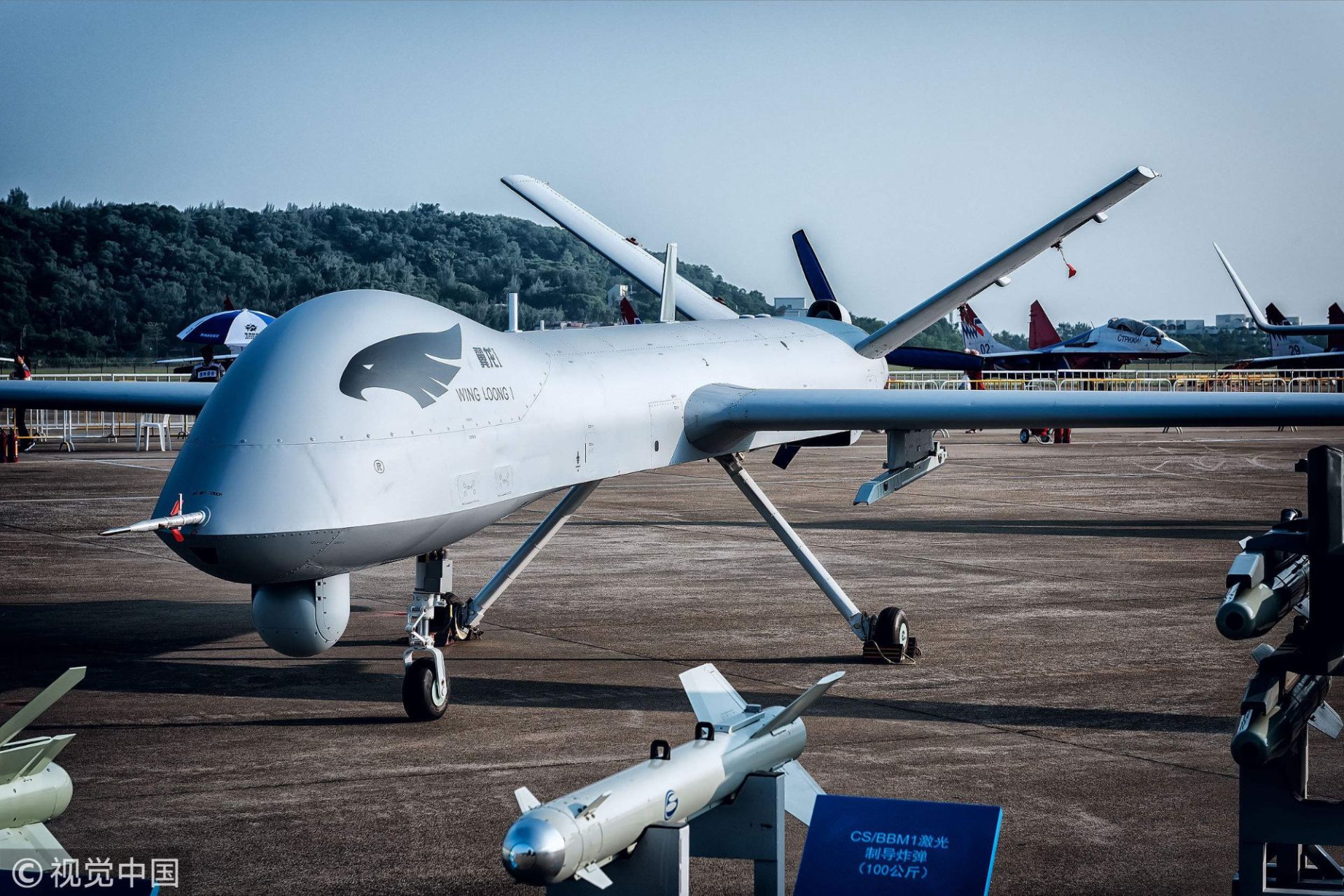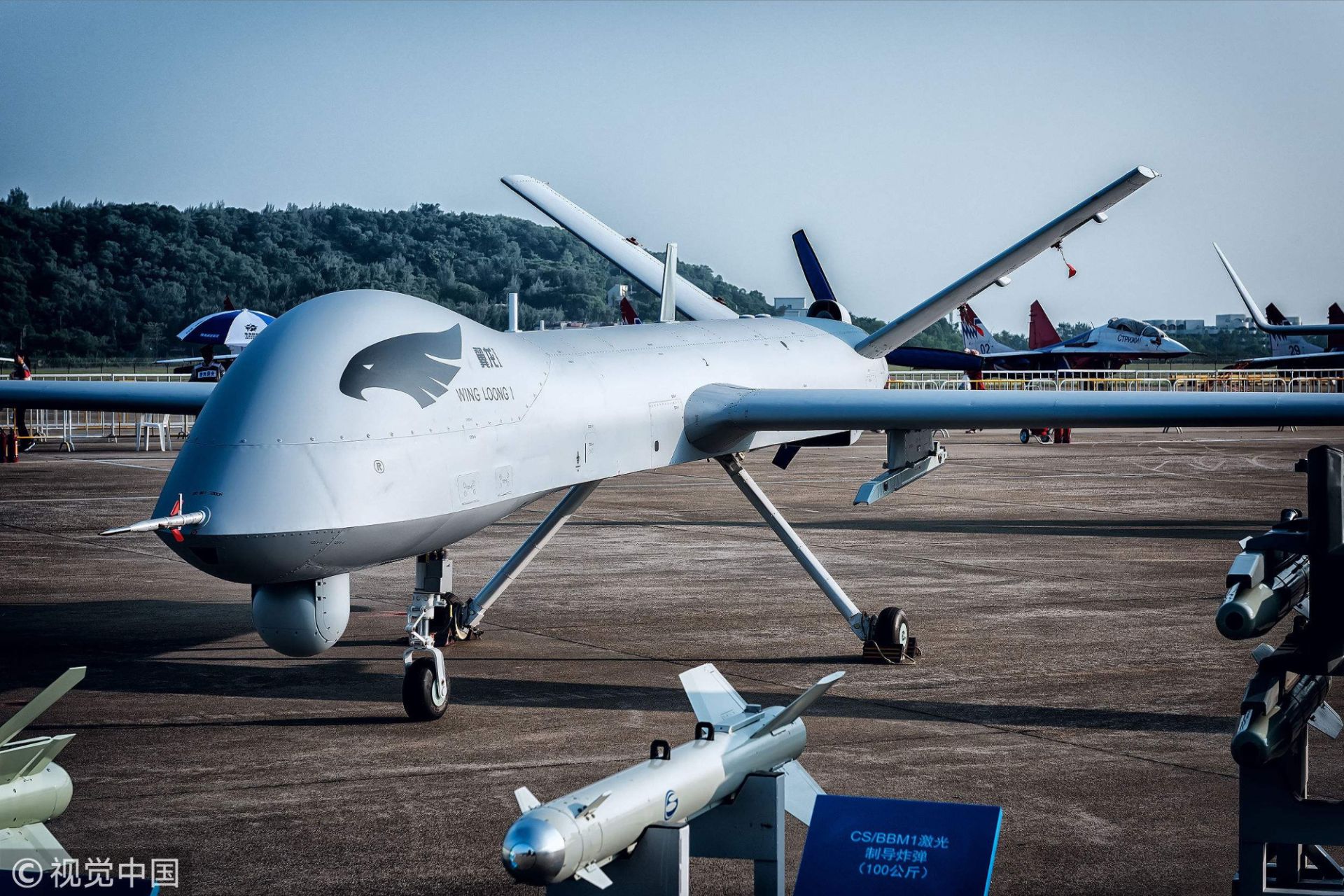Italy Seizes Chinese UAV Shipped to Libyan Militias

{loadposition bannertop}
{loadposition sidebarpub}
Italian authorities have seized Chinese military drones intercepted at an Italian port to prevent their shipment to a Libyan warlord. Three containers filled with weapons were seized on June 18 by the authorities at the port of Gioia Tauro, in southern Italy, after being unloaded from a cargo ship, the MSC Arina, coming from China. Labeled as parts for wind turbines, the Wing Loong drones were to be loaded onto a ship bound for Benghazi in Libya and delivered to General Khalifa Haftar, the strongman who leads the eastern part of the country.
Follow Army Recognition on Google News at this link
Wing Loong showcased at Zuhai air show 2022 (Picture source: Chinese communication agency)
Two control stations were found in the cargo, which violated the UN embargo on arms deliveries to Libya. The containers were seized by a local magistrate. Investigators were on alert again in the port this weekend as a second shipment of more than three suspicious containers arrived on another cargo ship, the MSC Apolline.
Italy intercepted the drones following information from the United States, increasingly alarmed by Haftar’s growing ties with Russia as Moscow continues to pour weapons and troops through the port of Tobruk to support its military presence in Africa.
Haftar consolidated his power in eastern Libya after a failed attempt to conquer the western part of the country in 2020 and to overthrow the UN-backed administration in Tripoli. Indeed, the Libyan territory has been embroiled in civil war since the Arab Spring revolution in 2011, which led, thanks to a French operation in support of the protesters. However, since then, a real civil war has opposed Marshal Haftar and his militias, who formed a government over the eastern half of the country, to the internationally recognized government reigning over the western part. In these territories, authority is carried out by militias which have more or less variable control over relative parts of the territories. Among others are the 17 February martyrs, the Libya Shield armed group, and the Islamic State, among others. What is called the second civil war is today the focus of international tension crystallization.
Today, Marshal Haftar has been supported in his campaign by the United Arab Emirates, which are said to have used Wing Loong drones over western Libya and have been accused of using one to fire a missile at a military academy in Tripoli, killing 26 cadets.
“It is also likely that either they or the Chinese are training Libyans to pilot drones, meaning that Haftar will have personnel to use them when he tries to buy more,” according to some information, the cargoes did not contain missiles.
The location of the cargo was pinpointed after two Libyans were accused in Canada in April of conspiring to arrange the purchase of Chinese drones in exchange for Libyan oil. Fathi Ben Ahmed Mhaouek and Mahmud Mohamed Elsuwaye Sayeh were both former employees of the International Civil Aviation Organization, a United Nations agency based in Montreal.
“The plan was to sell millions of barrels of crude oil to China without anyone knowing,” a Canadian official said at the time of the arrests.
A source said the men had put a Chinese company in contact with Haftar’s supporters to negotiate the deal, which also involved the National Oil Corporation (the Libyan national oil company). The company is charged with distributing the revenues from the country’s large-scale oil extraction and has recently been accused of corruption.
The Wing Loong drone, also known as Pterodactyl I, is an unmanned aerial vehicle (UAV) developed by the Chinese company Chengdu Aircraft Industry Group. It belongs to the MALE (Medium-Altitude Long-Endurance) category, capable of operating at medium altitudes and maintaining extended endurance in flight. The Wing Loong is equipped for reconnaissance, surveillance, and precise targeting missions thanks to its capabilities of carrying various sensor equipment and guided munition payloads.
The commissioning of the Wing Loong began in the 2010s, marking China’s entry into the international market of MALE-type UAVs, previously dominated by actors like the United States and Israel. This UAV has been exported to several countries, especially in the Middle East and Africa, where it is used for surveillance and combat operations.

{loadposition bannertop}
{loadposition sidebarpub}
Italian authorities have seized Chinese military drones intercepted at an Italian port to prevent their shipment to a Libyan warlord. Three containers filled with weapons were seized on June 18 by the authorities at the port of Gioia Tauro, in southern Italy, after being unloaded from a cargo ship, the MSC Arina, coming from China. Labeled as parts for wind turbines, the Wing Loong drones were to be loaded onto a ship bound for Benghazi in Libya and delivered to General Khalifa Haftar, the strongman who leads the eastern part of the country.
Wing Loong showcased at Zuhai air show 2022 (Picture source: Chinese communication agency)
Two control stations were found in the cargo, which violated the UN embargo on arms deliveries to Libya. The containers were seized by a local magistrate. Investigators were on alert again in the port this weekend as a second shipment of more than three suspicious containers arrived on another cargo ship, the MSC Apolline.
Italy intercepted the drones following information from the United States, increasingly alarmed by Haftar’s growing ties with Russia as Moscow continues to pour weapons and troops through the port of Tobruk to support its military presence in Africa.
Haftar consolidated his power in eastern Libya after a failed attempt to conquer the western part of the country in 2020 and to overthrow the UN-backed administration in Tripoli. Indeed, the Libyan territory has been embroiled in civil war since the Arab Spring revolution in 2011, which led, thanks to a French operation in support of the protesters. However, since then, a real civil war has opposed Marshal Haftar and his militias, who formed a government over the eastern half of the country, to the internationally recognized government reigning over the western part. In these territories, authority is carried out by militias which have more or less variable control over relative parts of the territories. Among others are the 17 February martyrs, the Libya Shield armed group, and the Islamic State, among others. What is called the second civil war is today the focus of international tension crystallization.
Today, Marshal Haftar has been supported in his campaign by the United Arab Emirates, which are said to have used Wing Loong drones over western Libya and have been accused of using one to fire a missile at a military academy in Tripoli, killing 26 cadets.
“It is also likely that either they or the Chinese are training Libyans to pilot drones, meaning that Haftar will have personnel to use them when he tries to buy more,” according to some information, the cargoes did not contain missiles.
The location of the cargo was pinpointed after two Libyans were accused in Canada in April of conspiring to arrange the purchase of Chinese drones in exchange for Libyan oil. Fathi Ben Ahmed Mhaouek and Mahmud Mohamed Elsuwaye Sayeh were both former employees of the International Civil Aviation Organization, a United Nations agency based in Montreal.
“The plan was to sell millions of barrels of crude oil to China without anyone knowing,” a Canadian official said at the time of the arrests.
A source said the men had put a Chinese company in contact with Haftar’s supporters to negotiate the deal, which also involved the National Oil Corporation (the Libyan national oil company). The company is charged with distributing the revenues from the country’s large-scale oil extraction and has recently been accused of corruption.
The Wing Loong drone, also known as Pterodactyl I, is an unmanned aerial vehicle (UAV) developed by the Chinese company Chengdu Aircraft Industry Group. It belongs to the MALE (Medium-Altitude Long-Endurance) category, capable of operating at medium altitudes and maintaining extended endurance in flight. The Wing Loong is equipped for reconnaissance, surveillance, and precise targeting missions thanks to its capabilities of carrying various sensor equipment and guided munition payloads.
The commissioning of the Wing Loong began in the 2010s, marking China’s entry into the international market of MALE-type UAVs, previously dominated by actors like the United States and Israel. This UAV has been exported to several countries, especially in the Middle East and Africa, where it is used for surveillance and combat operations.




